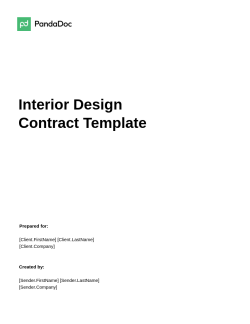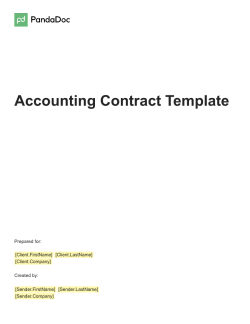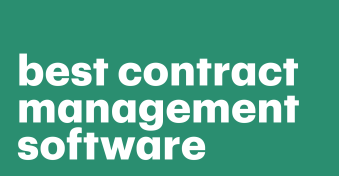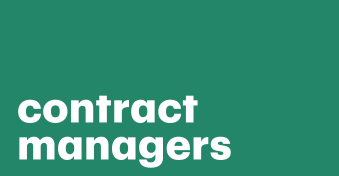Negotiating with clients, vendors, or contractors can be a delicate process that requires patience, preparation, and skill in order to create an agreement that is mutually beneficial for both parties.
It’s an essential part of the business process.
Knowing how to negotiate contract terms can help you get the best deal for your company while also creating win-win scenarios with other businesses
What is contract negotiation?
Contract negotiation is the process of negotiating an agreement between two or more parties.
It typically involves discussing the terms and conditions of an agreement, as well as determining a course of action to resolve any disputes that may arise prior to reaching a new, legally binding agreement.
Before the document is signed, you can negotiate (or change) parts of the contract until everyone in the business relationship agrees to the new terms.
Can I renegotiate the terms?
Yes, you can also renegotiate terms during the contract renewal process, during scheduled review periods, and — in some cases — during the middle of a contract (called an intra-deal negotiation).
At every opportunity, time should be taken to negotiate a contract so that both sides can reach an agreement that meets their needs and ensures a positive outcome for all involved.
What are the main goals of the negotiating process?
The goal of any good-faith contract negotiation is to reach equitable and beneficial terms for all parties involved.
To do this, negotiators must identify their respective interests, assess the various alternatives, and then come to an agreement on the contract terms.
That’s why it is strongly recommended to set goals that can focus your efforts and help teams arrive at appropriate outcomes while negotiations are underway.
Every contract has an underlying goal, and knowing what that is will help discussions progress more easily.
With that in mind, ask yourself if your contract negotiation goals can stand up to the following questions:
- Have I clearly explained all the terms and conditions of my renegotiation proposal?
- Are the goods or services I’m providing appropriately defined?
- Did I include a payment schedule, financing terms, and total costs in my compensation?
- Have I set reasonable expectations for the business relationship going forward?
- Are all the required renewal dates, effective dates, and completion dates clearly stated?
- Did I address liabilities and risks associated with the change of contract?
In the next sections, we’ll give you the tools you need to answer those questions with a “Yes.”
How to negotiate a contract
Let’s talk more in-depth about contract negotiation. Along the way, we’ll share some pro tips and insights to help make your next negotiation go smoothly.
1. Research the other party
Prior to contract negotiations, take some time to prepare by doing some research on the other party’s goals and objectives.
Be sure to consider their interests, strengths, weaknesses, and any external factors that could affect the negotiation process.
Doing this research ahead of time will help ensure that you’re prepared when it comes time for negotiations.
The more you know about the person you’re speaking to, the less likely they are to surprise you.
Preparing is one of the best negotiation tactics in your arsenal because you’ll quickly foster trust and respect in the other party, which will help you build rapport.
You need to establish common ground early in a negotiation, and what better way to do that than to promote mutual interest and friendship?
Research requires some effort on your part, but it can help you reach the agreement you want.
Research past negotiations
Try to find information on what kind of agreements they reached, whether they’re self-serving, or what negotiation styles they prefer.
Adjust your own contract proposal or negotiation style into something they were previously receptive to.
Obtaining information about the other party you’ll blow your meeting out of the park. It will also help improve your relationships with the party in the long run.
Speak to past negotiators
Ask other employees or clients for input on how you can improve your proposal, if possible.
This will not only give you more insight about the other party’s style of negotiation but also how they present themselves during negotiations.
Look for any potential weak spots and use them to your advantage.
Are they aggressive? Do they ask questions with hidden meanings? Are there any catches?
Search the internet
Social media is a valuable tool. Linkedin can offer a goldmine of information about a person’s professional life.
You can also research professional associations, like a bar association, if you’re negotiating contracts with a lawyer.
This will also aid in getting to know the other party better.
You can even try to get in touch with some of their past or current colleagues and ask for valuable insight.
Don’t assume it’s unprofessional to spark a casual conversation! Sometimes, speaking about your interests can help you establish common ground.
2. Brush up on your contract negotiation skills
Negotiation is a skill that you can learn and hone with a bit of practice.
But, what are the most valid contract negotiation tactics and skills you’ll need to successfully close a deal that is beneficial for you?
Here are some skills you can brush up on before stepping into the negotiation room.
1. Active listening
Active listening is an effective way of communication that involves not only hearing what the other person is saying but also paying attention and understanding their feelings.
It’s an important skill to have when engaging in contract negotiations, as it ensures that both parties clearly understand each other’s needs, wants, and expectations during the negotiation process.
By actively engaging with the speaker, repeating back what you’ve heard them say, and asking questions to further clarify, remaining cognizant of nonverbal cues (such as body language), you can gain valuable insight into the feelings and intentions of your negotiating partner.
Use that knowledge to steer your negotiation toward an amicable conclusion.
2. Communication
Get to know some nonverbal and verbal skills that keep you engaging.
Communication is the key to success and proper communication skills distinguish great negotiators from mediocre ones.
Make sure to be assertive but not aggressive.
Use your body wisely; gesticulation can be a large part of communication. Aside from that, you should build rapport with your counterpart.
You are also more likely to reach an agreement if you spend some time getting to know each other.
Ask open-ended and leading questions to get the conversation going, and be open and forthright when questions are offered to you in turn.
3. Patience
Patience is one of the most effective negotiation skills because it gives you control over time and allows you to set the tempo of the negotiation.
Rather than seeking a quick solution, don’t be afraid to take the time you need to reach your goals. If you rush, you won’t give yourself enough time to negotiate the best deal possible.
Sometimes, your silence can give the other party a signal that they should improve their deal, especially if they’re keen on working with you.
You need time to prepare and understand what is being offered and whether there are certain risks. Some experts call patience the negotiating super tactic. Learn how to improve it here.
4. Persuasion
You’ll likely need to influence and persuade the other party to see why a proposed compromise is beneficial to everyone.
It’s important to persuade someone carefully and avoid coming off as aggressive and needy.
Instead, use persuasion tactics like the scarcity principle, data and statistics, or social proof to persuade negotiators and win them over.
If you aren’t familiar with persuasion techniques, they can be difficult to master.
Visit this page to learn how you can develop this skill.
5. Adaptability
Being quick on your feet can change a lose-win to a win-win proposition.
Before the negotiation starts, do your research and try to explore different arguments and positions that your negotiators might take.
Explore different areas of the contract and construct potential questions and topics of conversation.
This way, you’ll be ready to respond to everything in a clear and efficient manner.
Each negotiation round is unique and the situation may change depending on the day.
This is where your adaptive skills kick in, telling you how to navigate the newly changed situation.
Check out this article to find out how you can improve your adaptive skills.
Improving these skills will make you a stronger negotiator and lead to more successful negotiations.
You can find a wide variety of great courses, like this Harvard Negotiation Mastery Course, that will help you master the negotiation process.
3. Understand basic contract law
There’s a good reason why most organizations staff legal teams: The law is complicated. Knowing where to start can save you time.
In the United States, both state and federal law play a role in how contracts are interpreted and upheld.
State-controlled contracts are governed by the common-law system, which relies on existing legal precedents established in prior court rulings as a basis for future decisions.
Because the law is constantly evolving, keeping up with the changes in case law is both important and time-consuming.
The Uniform Commercial Code (UCC) controls contracts that handle the sale of goods.
This standardized collection of guidelines is incorporated with state-related sales laws.
A contract is made when there is an offer, an acceptance to an offer, and enough consideration to make the contract valid.
A lawyer can help you determine if your contract is legally binding.
You may want to brush up on some contract terms, like procurement (to persuade someone to do something), bid (supplier’s quote), and others.
There are also different kinds of negotiators, some of which may employ questionable negotiation tactics.
Knowing the law and the legal codes involved in the process will help you distinguish a good deal from a potentially devastating contract.
4. Consider professional advice
Legal negotiation isn’t always frustrating, but it can be.
Especially on smaller teams, it can be difficult for negotiators to fully understand the nuance and terms of contracting when they themselves are specialized in other areas.
Often, to save a headache, businesses rely on well-structured templates that cover their basic business matters.
However, negotiating contract terms in real-time is a major step up from those fundamentals and may require backup, regardless of how small the change will be.
Guidance from a law firm isn’t your only option, although it should be your first.
Prior to jumping into contract negotiations, consider these roles and the assistance they can provide:
Contract lawyers
Lawyers specializing in contract law can draft contracts, review contracts, and protect your legal rights.
Contract lawyers can offer legal advice if you need clarification of a legal term or legal language.
Business advisor
Business advisors specifically offer hands-on help, support, and advice for business areas.
Hire one to ensure your business needs are met in a contract.
Governing unions and bodies
Some contract or business questions can be answered by a government branch.
If you’re negotiating with a company that’s unionized you can speak to a representative directly about drafting a legal union contract.
5. Be professional
Like it or not, most employers will judge our professionalism based on appearances.
It’s still important that you speak respectfully to the negotiator and appear prepared to all parties involved, but you won’t get far without a suit, a decent haircut, and proper posture.
Counterparties in your negotiation have to make a quick judgment about your personality, trustworthiness, and skill. If you’re professional and self-assured, you’ll come out on top.
You can improve your negotiation chances by checking off the following:
- Dress in a business-appropriate attire that makes you feel powerful and self-confident.
- Sit up straight with your shoulders squared.
- Keep your hands and feet still.
- Make eye contact with whomever you’re speaking to.
- Observe the other party’s posture and offer concessions if things aren’t going well.
6. Take your time
While it can be tempting to rush through the process, it’s crucial to take things slowly in order to avoid misunderstandings down the line.
Often, many negotiators feel uncomfortable or out of place dealing with contracts and may want to rush to get it over with. However, doing so comes with major risks and lasting consequences.
A poor contract can lead to a lot of misunderstanding and, if you’re on the end of a bad deal, you may be signing years of profits and productivity away in pursuit of deadlines that are ultimately unsustainable.
Take your time to thoroughly review all of the details of the contract and make sure that both sides understand each other’s goals and needs before signing on the dotted line.
Think of negotiation as a chance to add value and collaborate, not to “beat the other side.” Having a fresh take on negotiating may help you relax and even enjoy the experience.
7. Use templates
Templates let you create a legally binding contract in minutes.
Contracts, in general, are very comprehensive and full of legal information.
If you’re someone who’s not readily familiar with all the peculiarities, you’ll have a hard time drafting a contract on your own.
Of course, you can always enlist the help of lawyers to draft contracts for you.
However, legal counsel can quickly become expensive when drafting a contract entirely from scratch.
In many cases, modifying a ready-made contract template to fit the needs of your business is a more effective option.
At PandaDoc, we offer a wide variety of contract templates suitable for different industries that you can optimize and modify for your unique needs.
While preparing a template will get most of the hard work done before the negotiation even starts, be sure you have your legal counsel review any template you create or modify.
Laws vary by locale and region, so you’ll need to make sure that your terms are in compliance with those regulations.
We have over 750 contract templates in our gallery, some of which include:

Freelance Graphic Design Contract Template
Used 8136 times
3.9 rating (12 reviews)
You can use software to draft complex contracts that look professional and streamline the negotiation process.
Just fill out the gaps with your business and service information, and you’re good to go.
How do you write a draft contract?
Here’s a closer look at how to use Word, PandaDoc, and Google Docs to draft a contract:
1. Word
Microsoft Word has plenty of templates built into the software.
From Microsoft Office, click the Microsoft Word tab and select “More Templates.” In the search bar, search for “contract templates.” You can narrow down your search by specifying what type of contract you’re looking for, whether it’s a business or employment contract.
Let’s take a look at the pros of using Word:
- Easily Accessible: Most of us own and use Microsoft Office daily. You’re already familiar with how to use the software; you just need to make a new document and create a contract.
Unfortunately, the cons heavily outweigh the pros:
- Lacks legality: While Word comes with a wide variety of template options, most of what you can use won’t be legally binding. Word templates are typically uploaded by users, not professionals. You’ll still need to research contract law or go to a lawyer, just to be sure.
- Not great for complex issues: Every industry has unique business negotiation needs that usually aren’t accounted for in a Word template.
- Too vague or too strict: Without proper legal knowledge, a Word template can offer terms that may leave your business open to legal or financial repercussions.
2. PandaDoc
When it comes to contracts, PandaDoc offers collaboration and negotiation opportunities that software like Word struggles with.
Using our contract management software, you can easily create and manage contracts that are legally binding when upon signature.
You’ll never even need to leave the app when negotiating contracts with PandaDoc. Our redlining and real-time commenting tools are built to speed up the contracting process, eliminating the need for countless emails and phone calls.
You can also view, comment, and accept changes in one place.
Check out other great features you’ll get with PandaDoc:
Fast and efficient
Our top priority is your free time, and with our library of pre-approved clause choices, you can build an expert-level contract in minutes.
Removes bottlenecking
You can streamline your sales operations by following our approval process. With PandaDoc’s integrated workflow, you become free of burdensome tasks.
Instant collaboration
Communication is important for business success. PandaDoc makes sure you and your team keep the conversation flowing with chat functionality.
Instant access
Our digital contract solution removes the need for binders and paper. Contract management has never been easier.
Although you’ll have an initial learning curve with PandaDoc, we help you every step of the way.
3. Google Docs
Similar to Word, Google Docs contains its own batch of templates.
While this isn’t exactly contract management software, it’s still a useful way to deal with contracts.
From the Google Docs main screen, locate “Template Gallery” in the upper right part of the screen. Click “Template Gallery” to expand the template selection.
If you scroll down, you’ll notice a few templates we’ve created, like the Consulting Agreement Template.
But here’s the bottom line: Google Docs suffers from many of the same problems as Word.
However, Google Docs can still be a great tool when creating contract drafts.
We’ve even created a PandaDoc and Google Drive integration software that keeps paperwork simple.
When you find the perfect template, our document add-on helps you generate documents and collect eSignatures all from one location.
10. Contract negotiation techniques
To negotiate agreements successfully, you’ll need to have a few contract negotiation techniques up your sleeve.
Use these common negotiation strategies that are proven to work.
1. Compartmentalize
Avoid an “all or nothing approach” when negotiating because your counterparties probably won’t agree with all of your terms.
Pass this roadblock by breaking the negotiation into sections, so you reach more solutions in different parts.
For example, let’s say your company and the other party can’t agree on whether or not to collaborate with an influencer on a product launch and this part is blocking the whole negotiation process from moving forward.
When you reach an impasse, consider tabling that issue and revisiting it after you’ve found common ground on a different topic.
2. Seize the reins
The phrase “controlling the agenda” means creating an advantage in the negotiation by controlling the pace.
If you set yourself up as the moderator, you can control the timing and location of the meeting and the topics under discussions.
This will give you an advantage, since the party that outlines what will be discussed ultimately has more control over how issues are resolved.
The Harvard Business Review gives great tips on how to control the negotiation before it even begins. This can prepare you for the process.
3. Facts, not emotions
Try to remove emotion from the negotiation as much as possible and focus on what influences the counterparty. You can reduce conflict by figuring out what the other party wants.
You can do is show you are not invested in the negotiation on a personal or emotional level (You’re there to do business.)
Showing this level of detachment has to do with the language you use.
Use impersonal language, and remove yourself from the equation.
For example, rather than saying, “I believe that approach will create risk,” use impersonal language phrases that state facts. Say instead: “If we agree to these terms, both companies will be at risk.”
4. Ask for what’s fair
By telling the negotiating parties you’re “only asking for what’s fair,” you’re justifying your terms on industry standards.
The burden shifts to the other party to make an exception, which you’d only accept if they offer concessions elsewhere.
If you show the other party that you know what you want, they will respect you more.
Let’s say that your company and the other party disagree on which company to source certain materials from.
You are confident that your solution is better than theirs and you have proof for your statement.
No matter how much they try, they can’t convince you otherwise. You’re only asking what’s fair and their only option is to agree with you.
Final thoughts
We hope that our guide has helped you learn how to prepare and negotiate a contract quickly and efficiently, while not compromising on quality.
If you’re prepared, knowledgeable, and confident, you’ll quickly become a negotiation master!
Disclaimer
PandDoc is not a law firm, or a substitute for an attorney or law firm. This page is not intended to and does not provide legal advice. Should you have legal questions on the validity of e-signatures or digital signatures and the enforceability thereof, please consult with an attorney or law firm. Use of PandaDocs services are governed by our Terms of Use and Privacy Policy.
Originally published October 5, 2021, updated June 8, 2023





